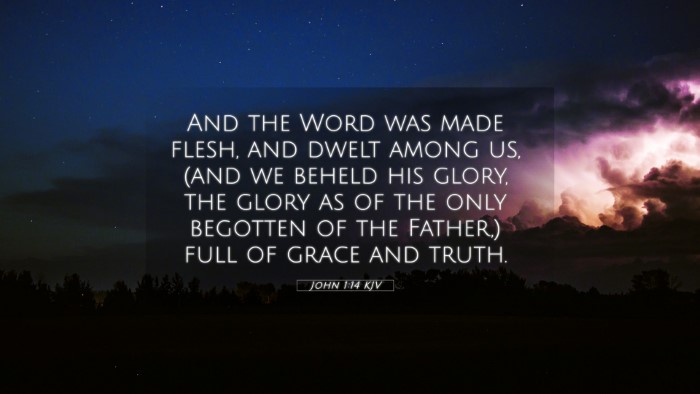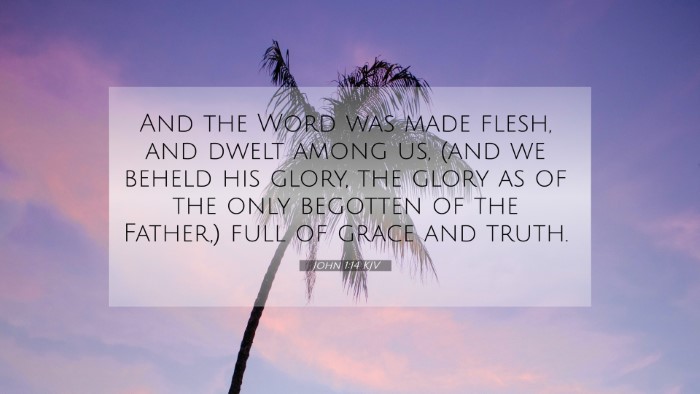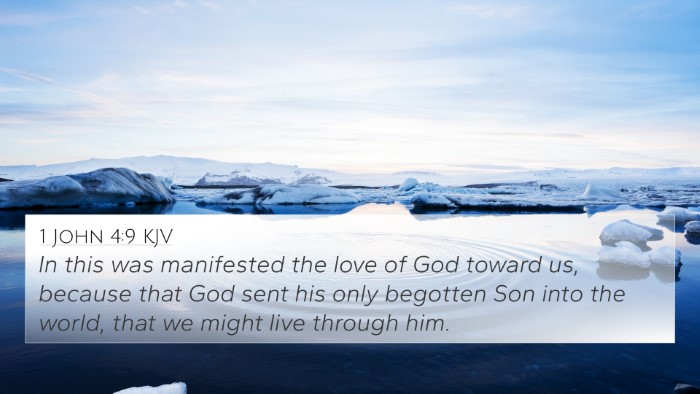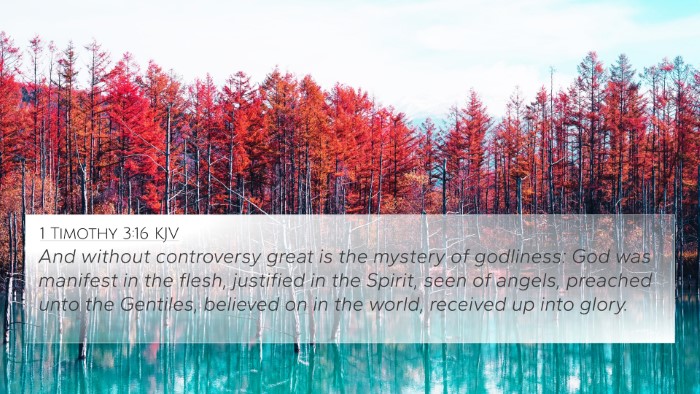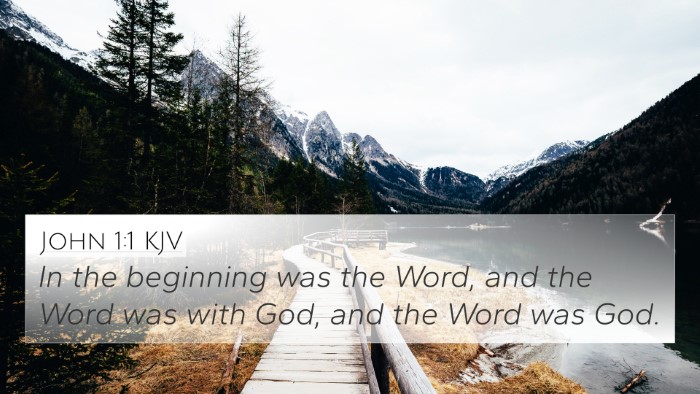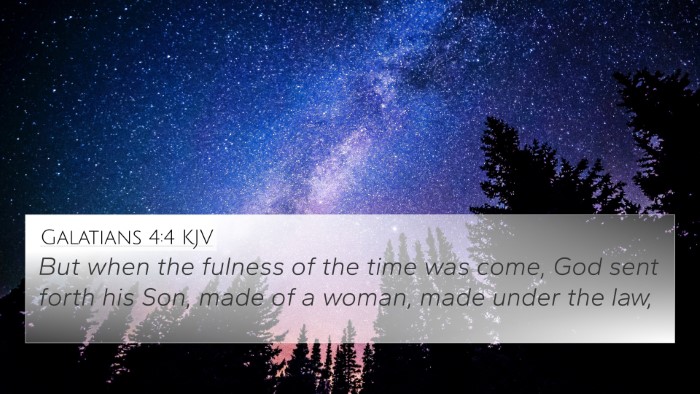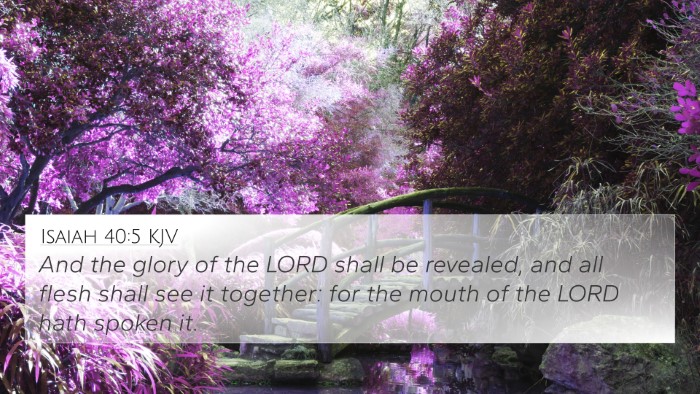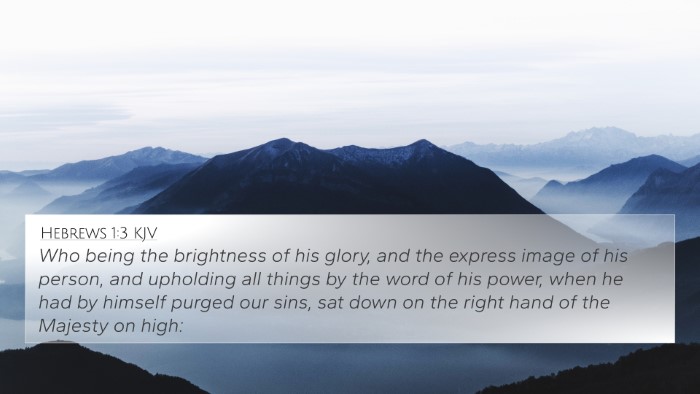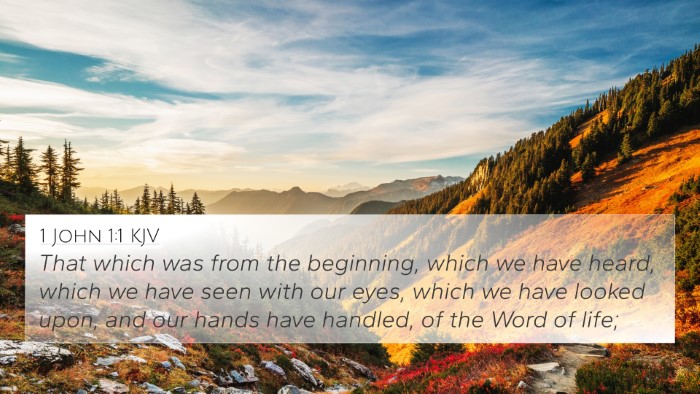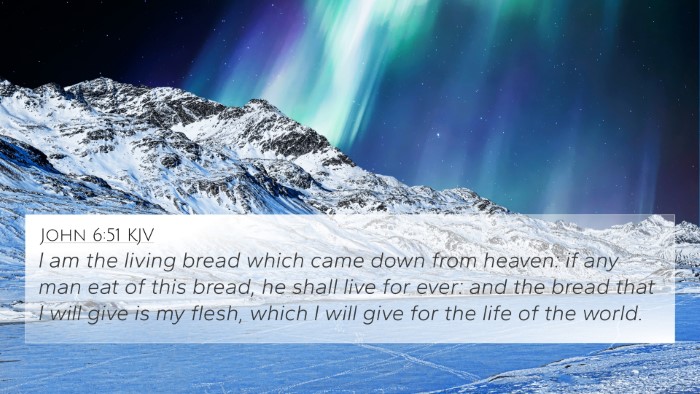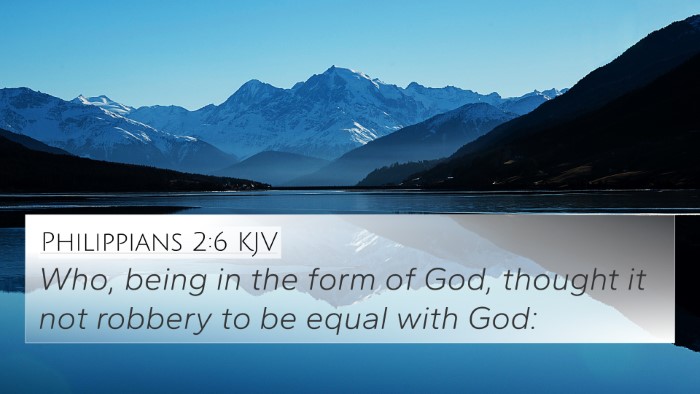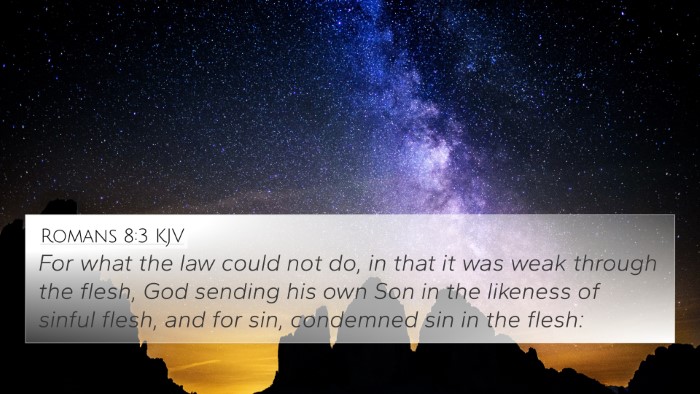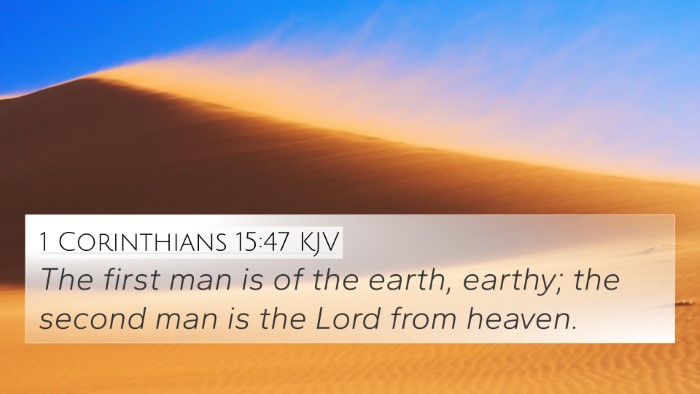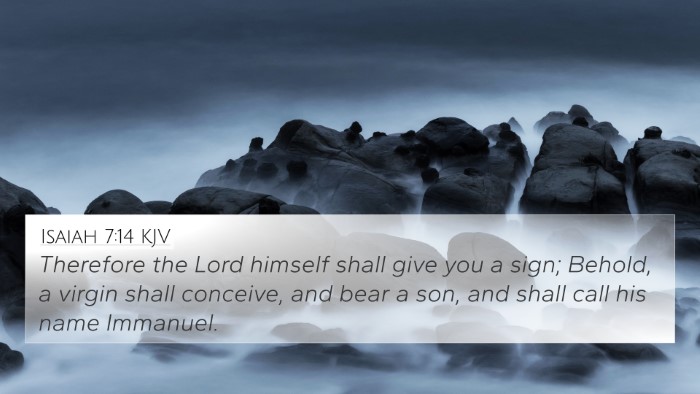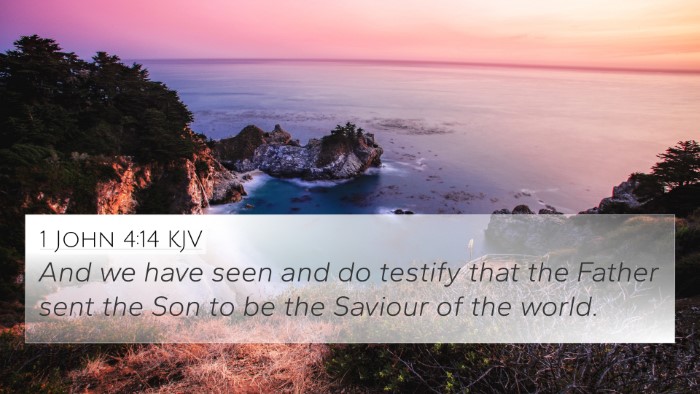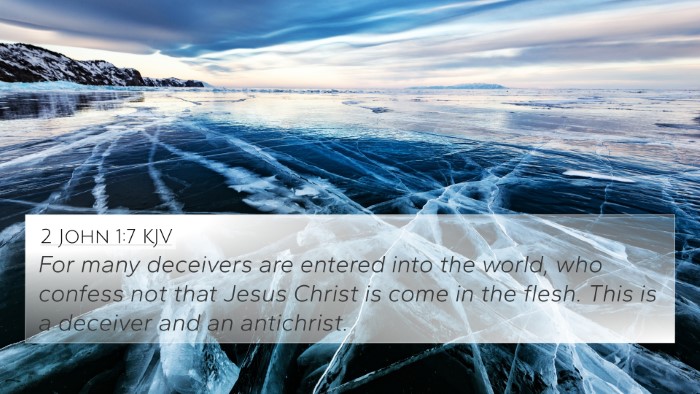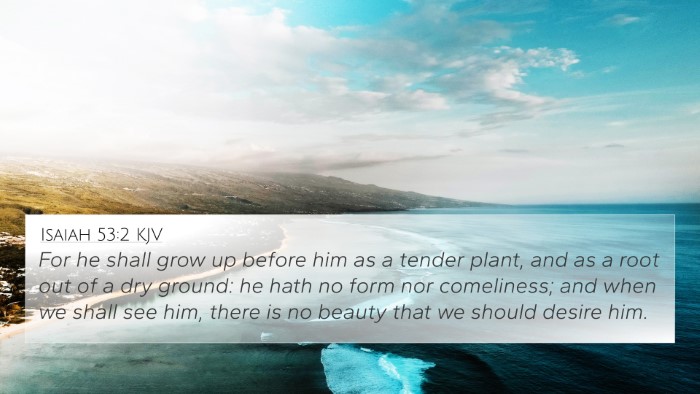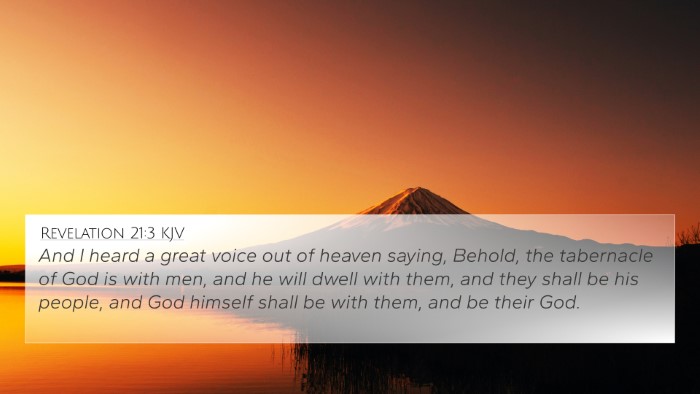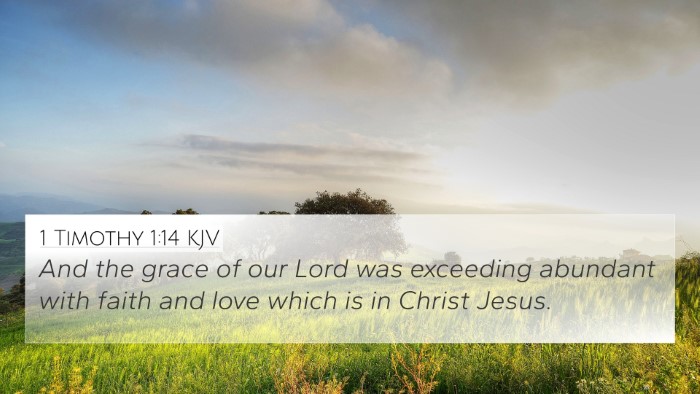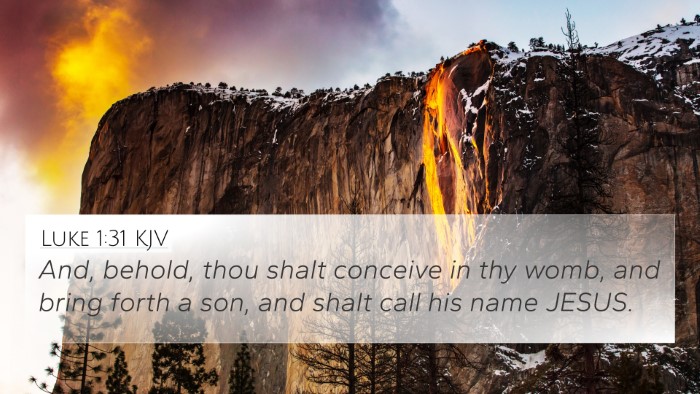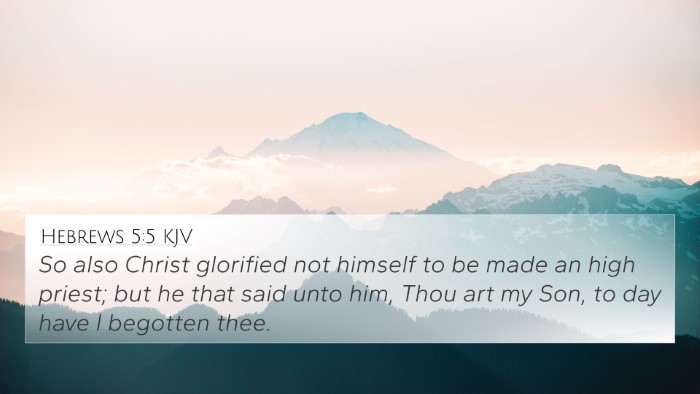Understanding John 1:14
John 1:14 states, "And the Word was made flesh, and dwelt among us, (and we beheld his glory, the glory as of the only begotten of the Father,) full of grace and truth." This profound verse encapsulates the essence of the Christian belief in the Incarnation, where God's Word, or Logos, becomes human to reveal divine truth and grace.
Verse Analysis
Several commentaries provide insights into the meaning of this verse. Matthew Henry highlights **the significance of the Incarnation**, noting that it demonstrates God's desire to connect with humanity on a personal level. Albert Barnes elaborates on the concept that **the "Word" represents both Jesus' preexistence and divine nature**, asserting that Jesus took on human form to fulfill God's plan for salvation. Adam Clarke emphasizes that this event underscores **the dual nature of Christ**, fully God and fully man, which is crucial for understanding His role as Savior.
Key Themes in John 1:14
- Incarnation: The idea that Jesus Christ, as the Word, became flesh is central to Christian theology.
- Divine Revelation: The glory of God is manifested in Jesus, allowing humanity to perceive God’s nature and character.
- Grace and Truth: The balance of grace and truth in Jesus highlights the fullness of God’s provision in salvation.
- Fulfillment of Prophecy: This verse connects to Old Testament promises regarding God's presence among His people.
Cross-References for John 1:14
To deepen the understanding of this verse, we can look at multiple Bible cross-references that relate to its themes:
- Philippians 2:7-8: Highlights the humility of Christ taking on human form.
- Hebrews 1:3: Affirms Christ as the radiance of God's glory and exact representation of His being.
- John 14:9: Jesus states that seeing Him is equivalent to seeing the Father.
- Colossians 2:9: Explains that in Christ dwells all the fullness of the Godhead bodily.
- 1 John 1:1: Refers to the tangible reality of Christ as the Word of life.
- Isaiah 7:14: Prophecy of the virgin birth, which speaks to the incarnation.
- Matthew 1:23: Emphasizes Emmanuel, meaning 'God with us.'
Connections Between Bible Verses
The connections between Bible verses, especially around the theme of the Incarnation and the nature of Christ, are crucial for a thorough theological understanding.
The links provided by the cross-references help us to see how the New Testament writers build upon Old Testament prophecies and teachings to affirm Jesus Christ's identity and His mission.
Comprehensive Bible Cross-Reference Analysis
In utilizing a Bible concordance or cross-reference guide, one can identify connections between key scriptures that elucidate the multifaceted nature of Christ found in John 1:14.
Tools for Bible cross-referencing enable believers and scholars alike to **navigate through the Scriptures** effectively. This can facilitate deeper studies, such as:
- Cross-reference Bible study methods: Understanding how specific themes interweave across the Old and New Testaments.
- Identifying connections between Biblical texts: Allowing the believer to see the overarching narrative of God's redemption plan.
- Bible cross-reference system: Utilizing various resources to enhance Scripture interpretation.
Thematic Bible Verse Connections
John 1:14 does not exist in isolation; it relates deeply with other scriptures that affirm **the central themes of grace, truth, and the nature of God revealed in Christ**.
Cross-referencing can lead to a richer engagement with the text, facilitated by comprehensive materials that assist in forming these thematic connections:
- Understanding how John contrasts the Law given through Moses with grace and truth that came through Jesus (John 1:17).
- Exploring how the "Word" as the communication of God to humans is unique to Christianity.
- Linking Jesus' teaching style, which frequently revealed deeper truths through parables, to His nature as the embodiment of truth.
Conclusion
John 1:14 serves as a cornerstone of Christian theology, reminding believers of the incredible mystery of God becoming man. Through cross-referencing and thematic exploration, individuals can better appreciate the profound implications this verse holds in the greater narrative of Scripture.

